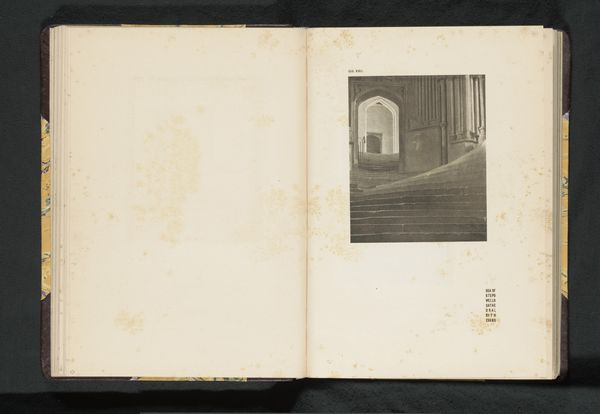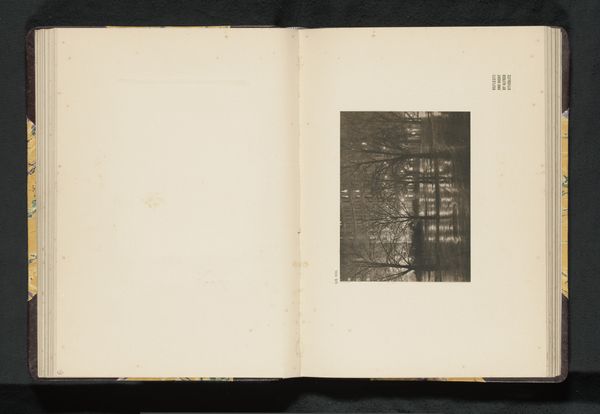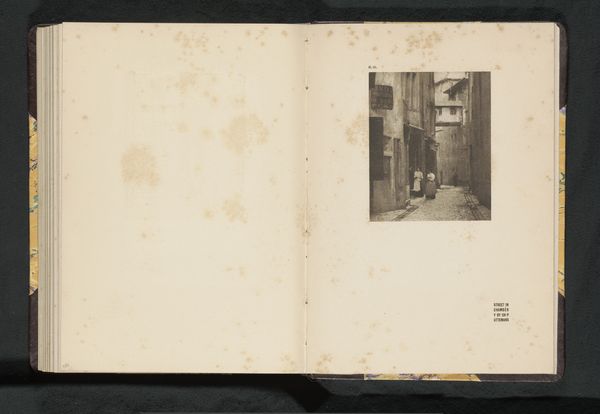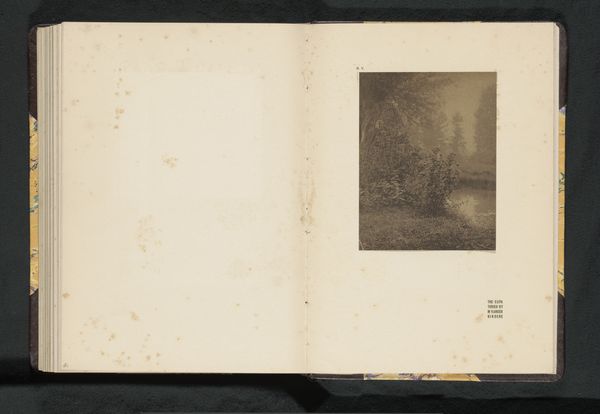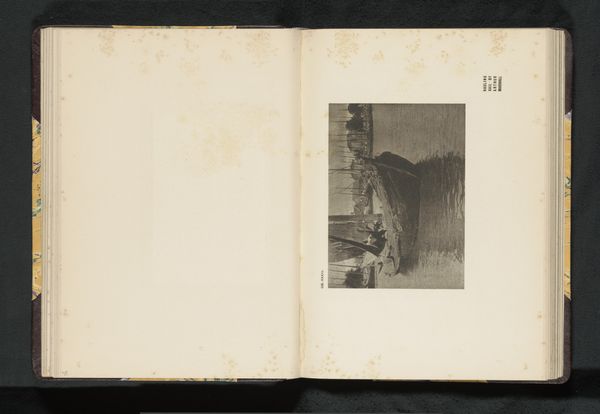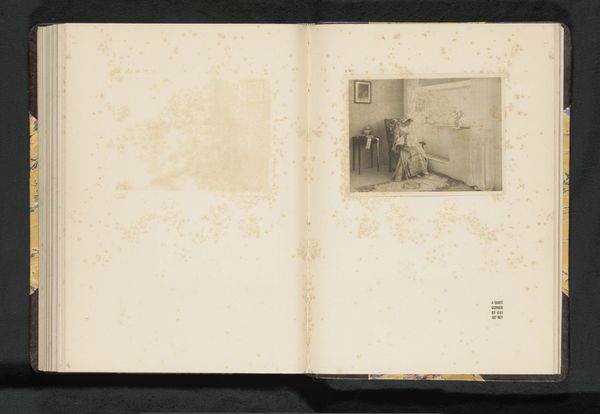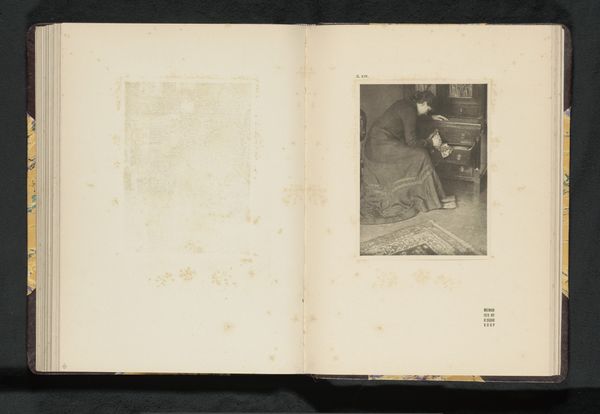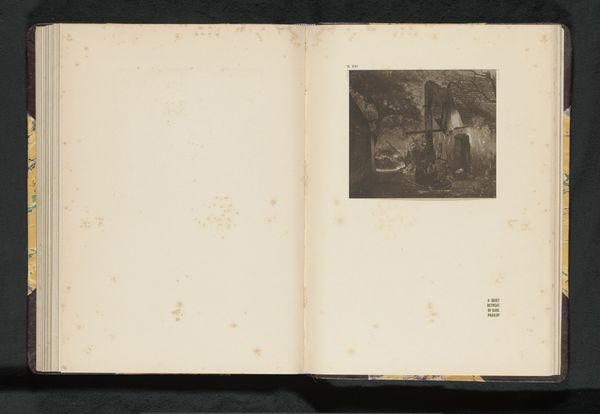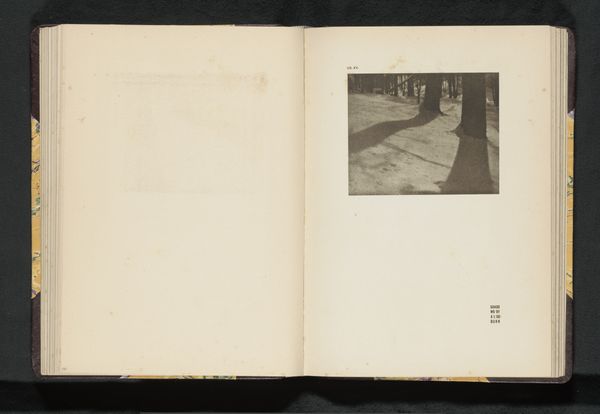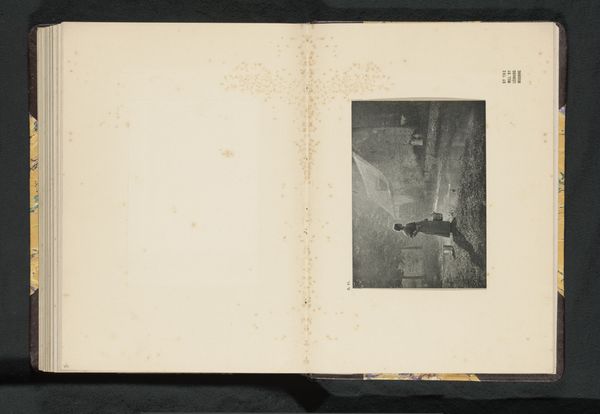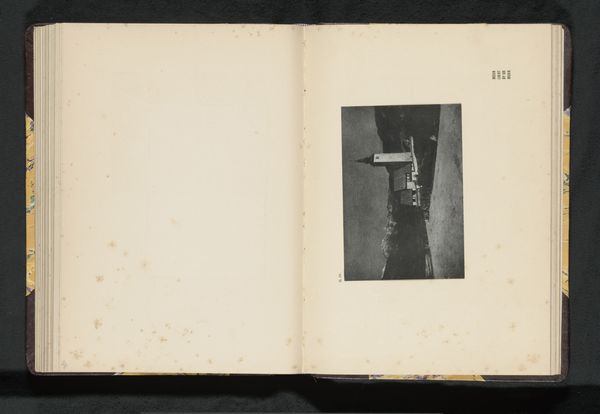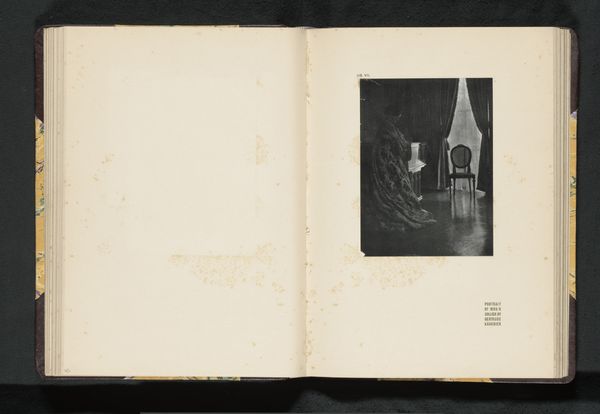
Dimensions: height 132 mm, width 123 mm
Copyright: Rijks Museum: Open Domain
Editor: So, this is “Vrouw bij het raam,” a photograph by Gustave Marissiaux, likely taken before 1905. It’s presented as an image within a sketchbook, which gives it a very intimate feel. The stark light streaming in through the window… It's a rather melancholic scene. What strikes you about it? Curator: What I find particularly compelling is the way Marissiaux uses light to not just illuminate the space, but to define it, both physically and metaphorically. Light becomes an active agent, almost a character, that unveils and obscures, suggesting ideas of visibility and invisibility. The subject's proximity to the window could speak to themes of confinement versus freedom, observation versus participation. How do you perceive the relationship between the woman and her environment, especially given what would have been the restrictive roles assigned to women at the time? Editor: That’s a good point. The way she's positioned almost seems like she's caught between two worlds. What about the framing within the sketchbook itself? Does that have any bearing on its interpretation? Curator: Absolutely. The inclusion within the sketchbook format draws attention to the processes of looking and recording. It asks us to consider the photograph not as a detached object, but as part of a larger narrative, possibly even a study or observation of daily life. And how might the act of photographing women, often relegated to domestic spheres, contribute to, or perhaps challenge, existing power structures and gender roles within the visual arts? Editor: I hadn’t considered it in terms of power dynamics before. That's given me a lot to think about! It makes me wonder about the unseen aspects of women's lives during that period. Curator: Exactly! Art serves as a mirror reflecting societal norms but can also be a catalyst for questioning them. Understanding art is also understanding culture and historical background. Editor: Thanks! It’s like the photo opened a door, much like the window, into another way of seeing things.
Comments
No comments
Be the first to comment and join the conversation on the ultimate creative platform.
